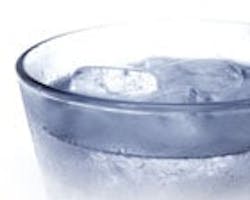EPA Announces Safe Drinking Water Research
The U.S. Environmental Protection Agency (EPA) recently announced the award of $3.6 million in research grants to four universities, one nonprofit and one research institute to improve the detection of known and emerging drinking water contaminants, including the harmful substances produced by blue-green algae in algal blooms and noroviruses.
The agency presently regulates 90 harmful chemicals, microorganisms and even radiation in water. To ensure even healthier drinking water, EPA is encouraging research into other possible contaminants and with faster technologies.
"By supporting research into innovative technologies and approaches to rapidly detect and identify viruses, bacteria and chemicals in drinking water, we can prevent illness," said George Gray, assistant administrator of EPA's Office of Research and Development. "These new projects will expand the toolkit available to those on the front lines of protecting our nation's drinking water and public health."
In the U.S., it is often difficult to link the incidence of waterborne diseases with their exact causes, due to the need for more sophisticated tools to monitor waterborne contaminants. These newly funded research projects will help improve our ability to pinpoint potential problems using innovative new technologies and methods.
Grant recipients:
• Battelle Memorial Institute, Pacific Northwest Division, Richland, Wash., $595,927 to develop a system for quantifying and removing noroviruses—viruses that cause gastrointestinal illness.
• Drexel University, Philadelphia, Penn., $599,999 to develop a field-portable sensor device that can quickly detect algal toxins or potential toxin-producers in source, finished and system waters.
• Montana State University, Bozeman, Mont., $599,996 to create novel, rapid methodologies for detecting pathogenic waterborne microbial contaminants that can be applied both locally and nationally. Information relevant to water quality and associated health risks on the Crow Reservation will be obtained.
• Georgia Institute of Technology, Atlanta, Ga., $600,000 to develop a rapid and sensitive sensor that can be used in the field to detect, identify and measure cyanotoxins, poisons produced by some blue-green algae.
• University of Missouri, Columbia, Mo., $600,000 to design a new technology using the metal lanthanum to detect low levels of viruses and bacteria in water.
• Woods Hole Oceanographic Institution, Woods Hole, Mass., $508,494 to establish fiberoptic genosensors that can rapidly detect and count multiple species of cyanobacteria in both laboratory and field settings.
More information on the grants is available at www.epa.gov/ncer/2008drinkingwater.
Source: EPA
